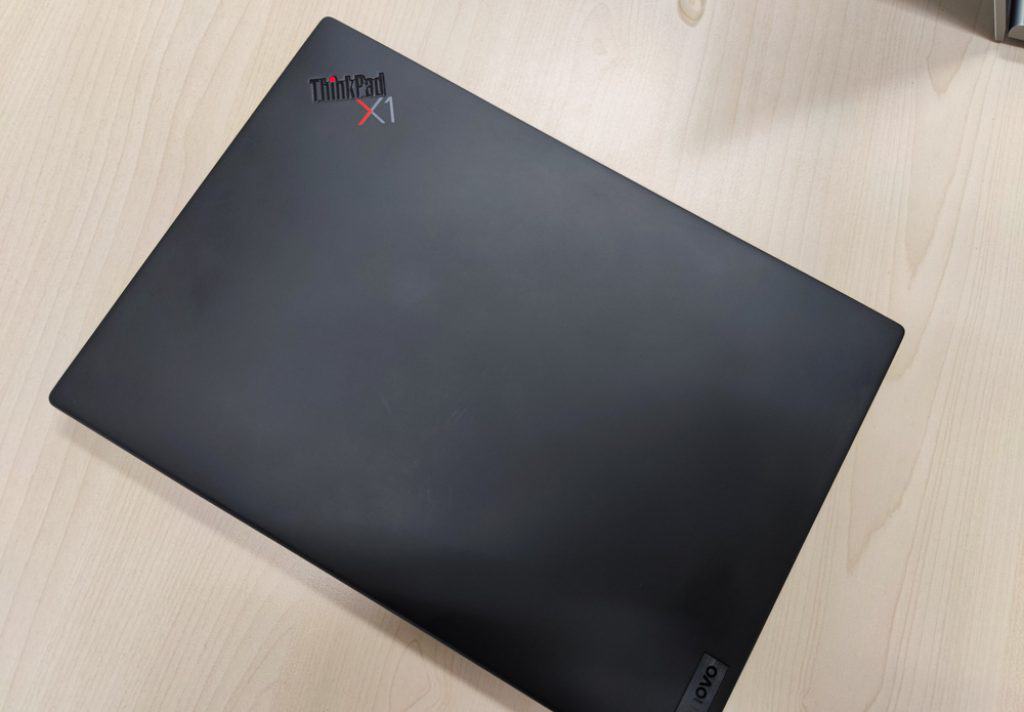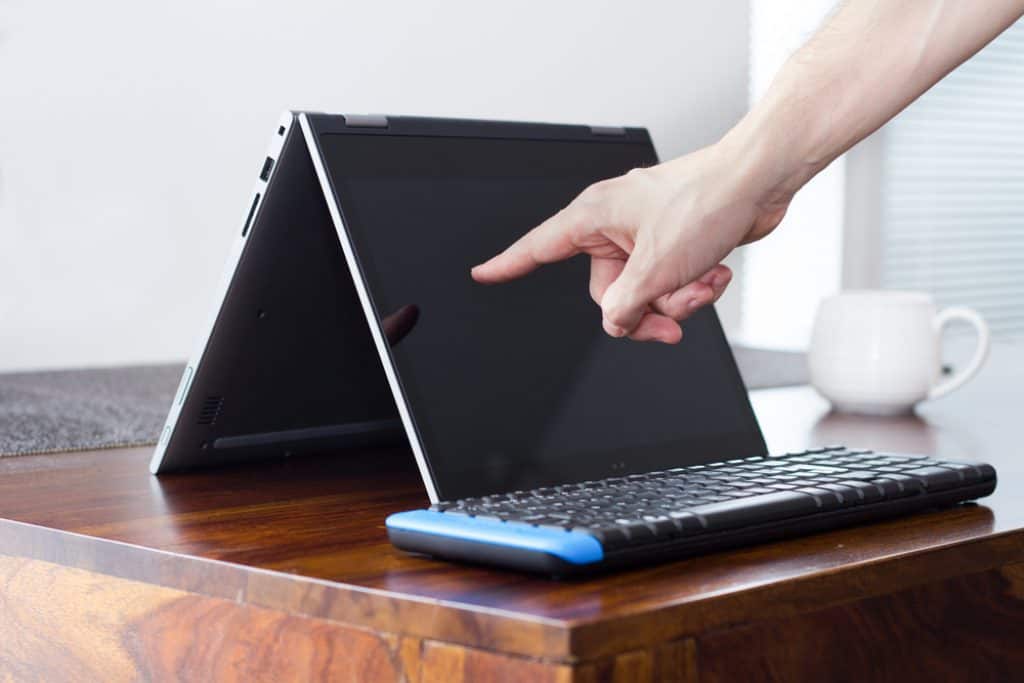In this review, I will go over the specifications and design of the second-gen and third-gen Lenovo ThinkPad XI Yoga laptop. Moreover, I will also look into aspects where the two laptops are similar as well as where they differ. Furthermore, I will go over their performance in areas such as CPU, storage, memory, graphics, and battery. Additionally, I will be providing benchmark test results based on the laptops’ performance. Also, I will compare both laptops with each other, as well as one or two of their closest competitors. Finally, after reading this review, you will be familiar with the specifications and performance of the second and third-generation Lenovo ThinkPad XI Yoga laptops.
Lenovo ThinkPad X1 Yoga Gen 2 and 3 Review: My Initial Thoughts
As far as laptop series go, the ThinkPad series requires little introduction. Lenovo bought the entire series from IBM a decade later, after it was first developed more than two decades ago by IBM. Lenovo not only succeeded in keeping the popular line going, but it also managed to include some unique features. The ThinkPad X1 Yoga (2nd and 3rd gen) are multi-functional and versatile laptops that are slim and light on the outside yet powerful on the inside. They can also adapt to a variety of usage circumstances, situations, and workloads. Furthermore, they have a similar design with only minor differences in processor and graphics card. However, their prices are massively different. For instance, the ThinkPad X1 Yoga Gen 2 has a $484.99 starting price while the Yoga Gen 3 has a $1,177.99 starting price. It is worth noting that these prices were accurate when this article was published in August 2021. Now let find out if the ThinkPad X1 Yoga Gen 2 and 3 have more in common or differs more.
Lenovo ThinkPad X1 Yoga Gen 2 and 3 Design, Dimension and Weight Review
The ThinkPad X1 Yoga Gen 2 and 3 both have a similar design and build quality, as previously stated. Therefore, their chassis are both made up of a combination of glass fiber, carbon fiber, and magnesium alloy. Lenovo also adds a couple of smart, modest changes to the ThinkPad X1 Yoga Gen 2 and 3 to give them a modern look. For example, there is a faint “X1” logo on the bottom left of these laptops’ lids, which radiates a certain coolness. A blacked-out ThinkPad logo with a basic red dot in the “i” is also present. The ThinkPad logo, however, is situated on the lid’s upper right, and it gives the laptops a modern vibe rather than an outdated look. In addition to their attractive appearance, these laptops (ThinkPad X1 Yoga Gen 2 and 3) are very durable. For example, they passed about a dozen MIL-Spec tests, which are the same tests used to assess the durability of U.S. military equipment. As a result, the laptops will be able to survive extreme conditions such as high humidity, extremely high and low temperatures. Moving on to the laptops’ (ThinkPad X1 Yoga Gens 2 and 3) display, they both feature a 14-inch touchscreen display. Having mentioned above that these laptops’ designs are quite similar, it is no surprise that they feature the same screen resolution options – FHD (1920 x 1080) and WQHD (2560 x 1440). Given that they both feature the same display size and resolution, I test only the ThinkPad X1 Gen 3’s display. Furthermore, the display features a WQHD (2560 x 1440) screen resolution. Additionally, this display is so colorful and bright, recording 454 nits of maximum brightness. It also boasts a very high contrast ratio of 1050:1, 0.68 color accuracy, and a flawless 2.2 gamma. Therefore, the display will be able to view bright and colorful content, as well as high-quality images, documents, or videos. Moving on, Lenovo added a ThinkPad Pen Pro for the X1 Yoga Gens 2 and 3’s touchscreen displays. This stylus pen has 2,048 levels of pressure sensitivity which is more than the HP pen found on the Spectra x360 13. The HP pen on the Spectra x360 13 has a pressure sensitivity level of 1,024. The way a device determines how thick or thin the lines you draw on it is referred to as pressure sensitivity. Furthermore, this is dependent on how hard you press down with the stylus pen. The ThinkPad X1 Yoga Gen 2 and 3’s screen can rotate 360 degrees on its robust hinges, making them 2-in-1 convertible laptops. This also allows you to use the laptops in four different modes. The four modes include Laptop mode, tent mode, stand mode, and tablet mode. The Laptop mode is the traditional clamshell form factor that has been around since forever. Furthermore, tent mode is when the laptop takes a tent-like shape or an upside “V”. Stand mode, on the other hand, is when the laptop’s display is towards you and the keyboard is facing a desk. Lastly, tablet mode is when you rotate the keyboard to a full 360 degrees, with the display facing you. During the transitioning of these four modes, I didn’t encounter any problems thanks to the laptops’ sturdy hinges. There is one unique feature that the ThinkPad X1 Yoga Gens 2 and 3 have that I really love – a retractable keyboard. To clarify, the keys retract into the keyboard deck after you rotate the display screen past 190 degrees. As a result, the keys will be protected when using the laptops in different modes. In addition to that, when using laptops in tablet mode, it provides a flat surface for your hand to grip. Moving on to the ThinkPad X1 Yoga Gen 2 and 3 keyboards. They feature backlit keyboards, which both have 1.4 millimeters of key travel and feature 65 g of actuation force. The distance between when a key is resting and fully pressed is referred to as key travel. On the other side, the actuation force specifies how hard you must press the key in order for it to register an input. In general, the ThinkPad X1 Yoga Gen 2 and 3 keyboards are very comfortable to type on and have good tactile feedback. In contrast, the keyboards on the Microsoft Surface Book and Apple MacBook Pro 13-inch are less comfortable to type on. Both the ThinkPad X1 Yoga Gen 2 and Gen 3 feature a TrackPoint at the center of their keyboards. These track points can be used instead of a touchpad, and they register input accurately and seamlessly navigates the cursor. Below the keyboards of the ThinkPad X1 Yoga Gen 2 and 3 are 99.06 x 63.5 mm touchpads. These touchpads have a smooth surface and support two-finger scrolling and also Windows 10’s three-finger navigation gestures. Moving on, the ThinkPad X1 Yoga Gen 2 and Gen 3 features the same number of ports with some slight differences. Specifically, the Yoga Gen 2 features an Ethernet and 3 USB 3.0 ports. The Yoga Gen 3, on the other hand, doesn’t have an Ethernet port and has only 2 USB 3.0 ports. On the left side of both laptops, there are USB-C ports, two USB 3.0 ports, and two Thunderbolt 3. The right side of both laptops features a headset jack, a Kensington lock port, and an HDMI port. However, on the right side of the Yoga Gen 2 are also an Ethernet and a third USB 3.0 port – all of which the Gen 3 doesn’t feature. Moving on to the ThinkPad X1 Yoga Gen 2 and Gen 3 weights and dimensions. The ThinkPad X1 Yoga Gen 3 measures 334 x 229 x 17.05 mm and weighs 1400 g. However, the ThinkPad X1 Yoga Gen 2 weighs less, weighing 1360 g and measuring 333 x 229 x 17.4 mm. Comparatively, both the ThinkPad X1 Yoga Gen 2 and Gen 3 weighs less than the ThinkPad X1 Yoga Gen 1. Moreover, it is worth noting that the ThinkPad X1 Yoga Gen 1 is the predecessor to the ThinkPad X1 Yoga Gen 2. The ThinkPad X1 Gen 1 weighs 1406.14 g and measures 333 x 229 x 16.8 mm. However, the ThinkPad X1 Yoga Gen 2 and Gen 3 are heavier than the HP Spectra x360, which weighs 1315 g. Finally, in this design review section, I will rate the ThinkPad X1 Yoga Gen 2 and Gen 3’s overall designs a nine out of ten.
Lenovo ThinkPad X1 Yoga Gen 2 and 3 Processor (CPU) Performance Review
The Lenovo ThinkPad X1 Yoga Gen 2 and Gen 3 differ in terms of processor. Specifically, the ThinkPad X1 Yoga Gen 2 features a 2-core Intel Core I7-7650U processor with a 4 MB cache. The Yoga Gen 3, on the other hand, has a 4-core Intel Core i7-8650U processor with a cache of 8 MB. Additionally, this processor has a base frequency of 1.90 GHz and 4.20 GHz maximum frequency. However, the Gen 2’s Intel Core I7-7650U processor has a 2.40 GHz base frequency and 3.80 GHz maximum frequency. Moreover, with these processors, the ThinkPad X1 Yoga Gen 2 and 3 are able to handle basic computing tasks, multitasking, and photo editing. However, the Yoga Gen 3’s processor is much faster than the Yoga Gen 2’s processor. This is because it features a higher cache and also a higher maximum frequency. Moreover, I still conducted a Cinebench R15 on both laptops to assess their processing capabilities. Cinebench is a CPU benchmark test for rendering tests that determines how quickly a processor can generate a scene using all of its threads. According to the results of the Cinebench R15 test, the ThinkPad X1 Yoga Gen 2 scored 336 points. The ThinkPad X1 Yoga Gen 3, on the other hand, scored 429 points. In comparison, the HP EliteBook x360 1030 G2 scored 326 points on the Cinebench R15 test. Therefore, the ThinkPad X1 Yoga Gen 2 and Gen 3 perform better than the HP EliteBook x360 1030 G2. In conclusion, both processors on the ThinkPad X1 Yoga Gen 2 and Gen 3 are exceptional. Additionally, they outperformed one of their competitors on a benchmark test. As a result, I believe both laptops deserve nothing less than nine out of ten ratings.
Lenovo ThinkPad X1 Yoga Gen 2 and 3 Memory (RAM) Performance Review
For memory, both the ThinkPad X1 Yoga Gen 2 and Gen 3 feature 2133MHz LPDDR3 RAM. However, the ThinkPad X1 Yoga Gen 2 is also available with an 1866 MHz LPDDR3 RAM. The maximum RAM capacity supported on both laptops is 16 GB. Given that both laptops come with the same memory type, I reviewed only the ThinkPad X1 Yoga Gen 2’s memory. The ThinkPad X1 Yoga Gen 2 laptop I reviewed came with 16 GB 2133MHz LPDDR3 RAM. Moreover, the ThinkPad X1 Yoga Gen 2 is an excellent multitasker with 16 GB RAM. As a result, I was able to open about 30 Chrome tabs while editing a picture on Photoshop. Also, I was streaming a song on Soundcloud at the same time. Despite these activities running concurrently on the ThinkPad X1 Yoga Gen 2, it kept functioning smoothly without lagging. In my quest to further determine the performance of the Yoga Gen 2, I ran a PCMark 8 test. Moreover, I also conducted a PCMark 8 test on the ThinkPad X1 Yoga Gen 3. So, based on the PCMark 8 test outcome, the ThinkPad X1 Yoga Gen 2 received a score of 3155 points. This score is almost identical to the ThinkPad X1 Yoga Gen 3’s score of 3176 points. However, both the ThinkPad X1 Yoga Gen 2 and Gen 3 scores aren’t enough to outperform the Dell Latitude 5289. On the PCMark 8 test, the Dell Latitude 5289 achieved a score of 3378 points. In conclusion, both the ThinkPad X1 Yoga Gen 2 and Gen 3 feature sufficient memory. However, they performed below expectations on the benchmark test I performed. Hence, in this memory review, I will rate both laptops a seven out of ten.
Lenovo ThinkPad X1 Yoga Gen 2 and 3 Storage Options & Performance Review
In terms of storage, both the Lenovo ThinkPad X1 Yoga Gen 2 and Gen 3 have a PCIe SSD. Both laptops’ SSD storage supports a 1 TB maximum storage capacity. The ThinkPad X1 Yoga Gen 2 and Gen 3 laptops I reviewed came with 512 GB SSD each. I carried out an AS SSD test to determine the performance of these laptops with their SSD. AS SSD test is a benchmark test for measuring the read and write speed of an SSD storage drive. Read speed means the amount of time it takes a laptop’s storage to open a particular file or application. Write speed, on the other hand, is how long it takes a file to be saved on a laptop’s storage. On the AS SSD test, the Yoga Gen 2 achieved a 2783.42MB/s sequential read speed and 1733.64MB/s sequential write speed. The ThinkPad X1 Yoga Gen 3, on the other hand, achieved a sequential read speed of 2246.9MB/s. Moreover, the laptop also achieved a sequential write speed of 1750MB/s. Comparatively, the ThinkPad X1 Yoga Gen 2 and 3 has a better sequential read and write speed than the Surface Laptop 2. Also, they have a better read and write speed than the Dell XPS 15 2-in-1. On the AS SSD test, the Dell XPS 15 achieved a 2126MB/s sequential read speed and 510MB/s sequential write speed. Furthermore, the Surface Laptop 2 achieved a sequential read speed of 629.1MB/s and a sequential write speed of 377MB/s. In conclusion, I will rate the ThinkPad X1 Yoga Gen 2 and Gen 3 a nine for their impressive storage performance.
Lenovo ThinkPad X1 Yoga Gen 2 and 3 Graphics Card Performance Review
The Lenovo ThinkPad X1 Yoga Gen 2 and 3 both feature an integrated graphics card. Specifically, the ThinkPad X1 Yoga Gen 2 comes with an Intel Iris Plus Graphics 640. The ThinkPad X1 Gen 3, on the other hand, comes with an Intel UHD Graphics 620. Additionally, the Intel UHD Graphics 620 features a 300 MHz base GPU frequency and 1150 MHz boost GPU frequency. However, the Intel Iris Plus Graphics 640 also features a 300 MHz base GPU frequency but 1050 MHz boost frequency. Unfortunately, none of these laptops graphics cards have a dedicated VRAM. Without dedicated VRAM, the laptops aren’t capable of running graphic-demanding games or applications, but it is adequate for casual gaming. As we always do at itechguides.com on our laptop reviews, I conducted a real-world gaming test on both laptops. This gaming test is to figure out the gaming capabilities of the laptops with their graphics cards. As mentioned earlier, these graphics cards don’t feature dedicated VRAM, so don’t expect them to excel on the gaming test. Take for example, while playing lower-end games like Rocket League, the ThinkPad X1 Yoga Gen 2 achieved 40 fps. The ThinkPad X1 Yoga Gen 3, on the other hand, achieved a frame rate of 57 fps. However, high-end games such as Civilization VI and Deus Ex: Mankind Divided are totally unplayable on both laptops. For the benchmark test, I conducted a 3DMark Fire Strike test on both laptops to further determine their graphics performance. On the 3DMark Fire Strike test, the Lenovo ThinkPad X1 Yoga Gen 2 scored 913 points. However, the ThinkPad X1 Yoga Gen 3 performs better, recording a score of 1125 points. In comparison, the Dell XPS 13 9370 performs better than both the ThinkPad X1 Yoga Gen 2 and Gen 3. Specifically, on the 3DMark Fire Strike test, the Dell XPS 13 9370 scored 1250 points. Moreover, the Dell XPS 13 9370 uses an Intel UHD Graphics 620 graphics card. In conclusion, both the ThinkPad X1 Yoga Gen 2 and 3 feature a weak graphics card that can’t even run most games. Therefore, if you are a gamer, please stay away from these laptops. Finally, I will rate both laptops a seven out of ten in this graphics review section.
Lenovo ThinkPad X1 Yoga Gen 2 and 3 Battery Life & Performance Review
For battery, Lenovo equipped the ThinkPad X1 Yoga Gen 2 and Gen 3 with different batteries. The ThinkPad X1 Yoga Gen 2 comes with a 54 Whr Li-Ion battery. On the other hand, the ThinkPad X1 Yoga Gen 3 comes with a 4-cell, 56Wh, Li-Po battery. As advertised by Lenovo, both laptops’ batteries should last up to 15 hours. To confirm Lenovo’s claims, I carried out a video playback test on both laptops. The video playback test involves repeatedly playing a video on both laptops until their battery runs low. On the video playback test, the Yoga Gen 2 lasted 5 hours and 27 minutes. However, the Yoga Gen 3 lasted 6 hours and 3 minutes. Comparatively, both laptops underperformed when compared to the Surface Laptop 2 and Dell XPS 15 2-in-1. Specifically, on the video playback test, the Surface laptop 2 lasted 7 hours and 7 minutes. The Dell XPS 15 2-in-1, on the other hand, lasted an impressive 8 hours and 29 minutes. In conclusion, the ThinkPad X1 Yoga Gen 2 and 3 performed below Lenovo’s claims. In addition to that, they also performed less when compared to some of their competitors. As a result, in this battery review section, I will rate the laptops a seven out of ten.
Lenovo ThinkPad X1 Yoga Gen 2 and 3 Review: My Final Thoughts
The idea of combining the ThinkPad and the Yoga was brilliant. The result of this idea is a formidable business laptop that also serves as a versatile entertainment device. The ThinkPad X1 Yoga Gen 2 and 3 are ideal for both business and pleasure thanks to their fast performance and excellent screens. It’s a shame, however, that their battery life lags behind most of their competitors. They do, however, have some standout characteristics, such as good port selection, powerful processors, and sturdy build qualities. As a result, I strongly recommend these laptops to anyone searching for high-quality convertible laptops. I hope you found this Lenovo ThinkPad X1 Yoga Gen 2 and 3 review helpful? If you found the review helpful, click Yes to “Was this post Helpful?” below. You could also review this product with the “Leave a Reply” form found at the end of this page. Finally, for more laptop reviews, visit our Laptop Reviews page. You may also find our Laptop Specs page very helpful.
References And Further Reading
Δ














